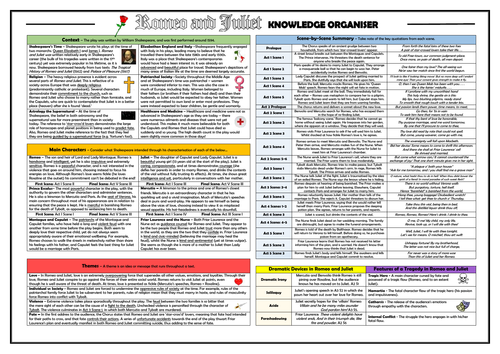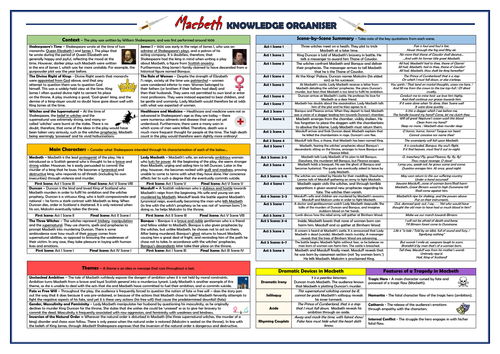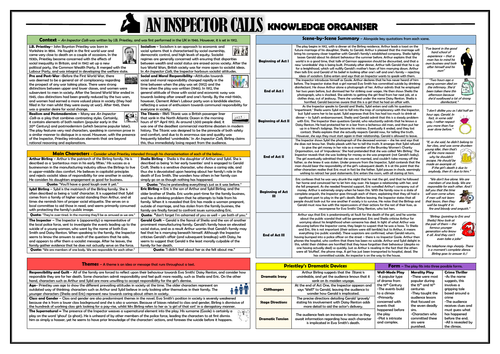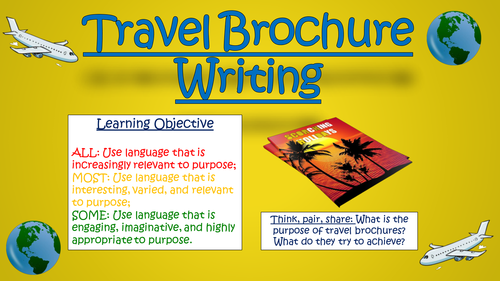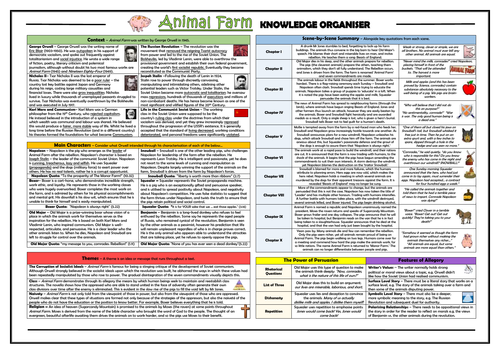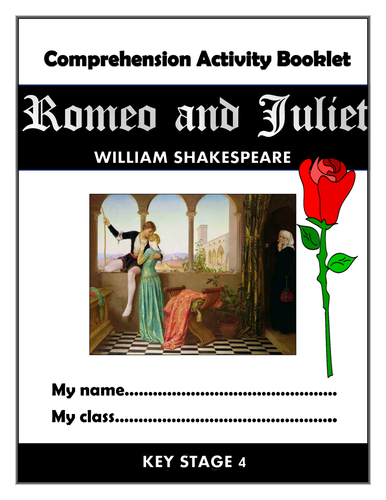
3k+Uploads
1969k+Views
2279k+Downloads
English

Goodnight Mister Tom - Chapters 14-15 - Double Lesson!
This engaging and thought-provoking double-lesson resource aids students in developing a secure understanding of the chapters 14 to 15 of Michelle Magorian’s 'Goodnight Mister Tom.’ In this section of the text, Willie returns home to London.
The comprehensive and colourful PowerPoint presentation enables students to understand the text through:
-Retrieving information;
-Making inferences;
-Summarising key information.
The sessions include a range of retrieval, vocabulary, inference, explanation and deeper thinking activities. A clear, colourful and comprehensive PowerPoint presentation guides students through the learning.
There are a wide range of activities in the slides (there are 17 slides in total) so I would recommend breaking into two lessons. The lessons are suitable for students in either KS3 or upper KS2, depending upon the individual context of the school and students.

Goodnight Mister Tom - Chapters 3-4 - Double Lesson!
This engaging and thought-provoking double-lesson resource aids students in developing a secure understanding of the chapters 3 to 4 of Michelle Magorian’s 'Goodnight Mister Tom.’ In this section of the text, Tom and Willie visit town. Tom buys Willie the things that he needs, whilst Willie meets a number of new people.
The comprehensive and colourful PowerPoint presentation enables students to understand the text through:
-Retrieving information;
-Inferring and deducing hidden meanings;
-Sequencing plot events.
The sessions include a range of retrieval, vocabulary, inference, explanation and deeper thinking activities. A clear, colourful and comprehensive PowerPoint presentation guides students through the learning.
There are a wide range of activities in the slides (there are 17 slides in total) so I would recommend breaking into two lessons. The lessons are suitable for students in either KS3 or upper KS2, depending upon the individual context of the school and students.

The Lion Inside - Two Whole Class Reading Sessions!
This resource pack of 2 whole class reading sessions aims to develop children’s fluency and comprehension skills, through reading Rachel Bright’s ‘The Lion Inside.’
Children read the text (included as a PDF) in two stages. Each reading is followed by a series of activities aiming to develop children’s retrieval, explanation, inference, prediction and summarising skills. It also contains a vocabulary check immediately after the extract is read to clarify any unfamiliar/ difficult language.
The tasks are comprised of quick-check questions, solo thinking, pair/ group discussions and deeper thinking activities.
The sessions are best suited for children in years 1-2, although with minor adaptations it could feasibly be used with slightly younger and older year groups.

Giraffes Can't Dance - Two Whole Class Reading Sessions!
This resource pack of 2 whole class reading sessions aims to develop children’s fluency and comprehension skills through reading Giles Andrede’s Giraffes Can’t Dance.’
Children read the text (hyperlinked) in two stages. Each reading is followed by a series of activities aiming to develop children’s retrieval, explanation, inference, prediction and summarising skills. It also contains a vocabulary check immediately after the extract is read to clarify any unfamiliar/ difficult language.
The tasks are comprised of quick-check questions, solo thinking, pair/ group discussions and deeper thinking activities.
The sessions are best suited for children in years 1-2, although with minor adaptations it could feasibly be used with slightly younger and older year groups.

Exploring China - Two Reading Comprehension Sessions!
These whole class reading sessions aim to develop children’s fluency and comprehension skills, whilst enabling them to gain a deeper understanding of the country of China, through reading a comprehensive age-appropriate non-fiction text about the east Asian nation.
The reading is followed by a series of activities aiming to develop children’s retrieval, explanation, inference, prediction and summarising skills. It also contains a vocabulary check immediately after the extract is read to clarify any unfamiliar/ difficult language.
The tasks are comprised of quick-check questions, solo thinking, pair/ group discussions and deeper thinking activities. The text is well-presented, clear and informative and is freely available on Epic (the link to the text is hyperlinked into the first slide of both PowerPoint presentations).
The session is best suited for children in years 4-6 although with suitable adaptations it could feasibly be used with slightly younger and older year groups.

How The Grinch Stole Christmas - Two Whole Class Reading Sessions!
This resource pack of 2 whole class reading sessions aims to develop children’s fluency and comprehension skills, through reading Dr. Seuss’s 'How The Grinch Stole Christmas.’
Children read the text (hyperlinked) in two stages. Each reading is followed by a series of activities aiming to develop children’s retrieval, explanation, inference, prediction and summarising skills. It also contains a vocabulary check immediately after the extract is read to clarify any unfamiliar/ difficult language.
The tasks are comprised of quick-check questions, solo thinking, pair/ group discussions and deeper thinking activities.
The sessions are best suited for children in years 1-2, although with minor adaptations it could feasibly be used with slightly younger and older year groups.

A Different Sort of Normal - Two Whole Class Reading Sessions!
This resource pack of 2 sequenced whole class reading sessions aims to develop children’s comprehension skills whilst learning about autism spectrum disorder. Children read key extracts from the text ‘A Different Sort of Normal’ by Abigail Balfe in two stages (both hyperlinked and provided as PDFs).
Each reading is followed by a series of activities aiming to develop children’s retrieval, explanation, inference, prediction and summarising skills. It also contains a vocabulary check immediately after the extract is read to clarify any unfamiliar/ difficult language.
The tasks are comprised of quick-check questions, solo thinking, pair/ group discussions and deeper thinking activities.
The sessions are best suited for children in years 3-5, although with minor adaptations it could feasibly be used with slightly younger and older year groups.

Mary Seacole - Non-Fiction Whole Class Reading Session!
This whole class reading session aims to develop children’s comprehension skills when reading non-fiction texts. This particular session focuses on their reading of an original information sheet (included) about Mary Seacole. This was initially used with a year 5-6 class as a part of their whole class reading provision throughout Black History Month.
The reading is followed by a series of activities aiming to develop children’s retrieval, explanation, inference, prediction and summarising skills. It also contains a vocabulary check immediately after the extract is read to clarify any unfamiliar/ difficult language.
The tasks are comprised of quick-check questions, solo thinking, pair/ group discussions and deeper thinking activities.
The session is best suited for children in years 5-6, although with minor adaptations it could feasibly be used with slightly younger and older year groups.

Nepal - Non-Fiction Whole Class Reading Session!
This whole class reading session aims to develop children’s comprehension skills when reading non-fiction texts. It focuses on their reading of an original non-fiction text about Nepal.
The reading is followed by a series of activities aiming to develop children’s retrieval, explanation, inference, prediction and summarising skills. It also contains a vocabulary check immediately after the extract is read to clarify any unfamiliar/ difficult language.
The tasks are comprised of quick-check questions, solo thinking, pair/ group discussions and deeper thinking activities.
The session is best suited for children in years 2-4, although with minor adaptations it could feasibly be used with slightly younger and older year groups.

You Wouldn't Want to Sail with Christopher Columbus - Two Whole Class Reading Sessions!
This resource pack of 2 whole class reading sessions aims to develop children’s comprehension skills whilst learning about the life and voyages of Christopher Columbus. Children read the text ‘You Wouldn’t Want to Sail With Christopher Columbus’ by Fiona McDonald in two stages (hyperlinked and PDFs).
Each reading is followed by a series of activities aiming to develop children’s retrieval, explanation, inference, prediction and summarising skills. It also contains a vocabulary check immediately after the extract is read to clarify any unfamiliar/ difficult language.
The tasks are comprised of quick-check questions, solo thinking, pair/ group discussions and deeper thinking activities.
The sessions are best suited for children in years 2-4, although with minor adaptations it could feasibly be used with slightly younger and older year groups.

The Tiger Who Came to Tea - Two Whole Class Reading Sessions!
This resource pack of 2 whole class reading sessions aims to develop children’s fluency and comprehension skills through reading Judith Kerr’s ‘The Tiger Who Came to Tea.’
Children read the text in two stages (hyperlinked and PDFs). Each reading is followed by a series of activities aiming to develop children’s retrieval, explanation, inference, prediction and summarising skills. It also contains a vocabulary check immediately after the extract is read to clarify any unfamiliar/ difficult language.
The tasks are comprised of quick-check questions, solo thinking, pair/ group discussions and deeper thinking activities.
The sessions are best suited for children in years 1-2, although with minor adaptations it could feasibly be used with slightly younger and older year groups.

Romeo and Juliet Knowledge Organiser/ Revision Mat!
This detailed and visually-appealing resource offers a complete reference point for students learning or revising William Shakespeare's 'Romeo and Juliet.' It contains comprehensive sections on:
- Context;
- Scene by Scene Summary (with quotes);
- Main Characters;
- Themes;
- Dramatic Devices;
- Features of Tragedy.
Key words and ideas are underlined for easy reference. The resource is designed to be printed onto A3, and is provided as both a PDF and a Word version (so that you can edit if you want to). All images used are licensed for commercial use and are cited on a separate document (included).

Macbeth Knowledge Organiser/ Revision Mat!
This detailed and visually-appealing resource offers a complete reference point for students learning or revising William Shakespeare's 'Macbeth.' It contains comprehensive sections on:
- Context;
- Scene by Scene Summary (with quotes);
- Main Characters;
- Themes;
- Dramatic Devices;
- Features of Tragedy.
Key words and ideas are underlined for easy reference. The resource is designed to be printed onto A3, and is provided as both a PDF and a Word version (so that you can edit if you want to). All images used are licensed for commercial use and are cited on a separate document (included).

An Inspector Calls Knowledge Organiser/ Revision Mat!
This detailed and visually-appealing resource offers a complete reference point for students learning or revising J.B. Priestley's 'An Inspector Calls.' It contains comprehensive sections on:
- Context;
- Scene by Scene Summary (with quotes);
- Main Characters;
- Themes;
- Priestley's Dramatic Devices;
- Features of Form.
Key words and ideas are underlined for easy reference. The resource is designed to be printed onto A3, and is provided as both a PDF and a Word version (so that you can edit if you want to). All images used are licensed for commercial use and are cited on a separate document (included).

Travel Brochure Writing!
This engaging and stimulating lesson enables students to create travel brochure texts containing appropriate and imaginative language choices, utilising a range of different language techniques with subtlety in order to craft writing that serves the dual purpose of being descriptive and persuasive. In particular, students learn how descriptive language such as of similes, metaphors, and personification, in addition to persuasive devices such as statistics, rhetorical questions, and personal pronouns, can help to create truly authentic and effective travel brochure pieces.
The lesson follows a clear, logical, bite-size learning journey, which guides students towards differentiated learning objectives. Over the course of this journey, they become able to:
- Define what travel brochures are and understand their purposes;
- Identify the persuasive and descriptive language devices that travel brochure writers employ
- Analyse the effects of the language in a model travel brochure text;
- Utilise a clear and challenging success criteria document in order to construct their own travel brochure pieces;
- Self/Peer assess travel writing attempts.
This resource pack includes:
- A visually engaging whole-lesson PowerPoint presentation;
- An interesting and ambitious travel writing extract (with a highlighted version for teachers):
-A logical and challenging worksheet, encouraging students to analyse key features;
- A detailed lesson plan, complete with what the teacher and students should aim to achieve at each stage of the lesson.
All images are licensed for commercial use, and are cited on the final slide of the PowerPoint.

Animal Farm Knowledge Organiser/ Revision Mat!
This detailed and visually-appealing resource offers a complete reference point for students learning or revising George Orwell's 'Animal Farm.' It contains comprehensive sections on:
- Context;
- Chapter by Chapter Summary (with quotes);
- Main Characters;
- Themes;
- Features of Allegory;
- 'The Power of Persuasion (in the speeches of Old Major and Squealer).
Key words and ideas are underlined for easy reference. The resource is designed to be printed onto A3, and is provided as both a PDF and a Word version (so that you can edit if you want to). All images used are licensed for commercial use and are cited on a separate document (included).

Harry Potter and the Philosopher's Stone - Description of Hogwarts!
This engaging and informative lesson enables students to make precise interpretations of the descriptive language used by J.K Rowling in her descriptions of Hogwarts in ‘Harry Potter and the Philosopher’s Stone.’ They also learn how the depiction of settings can have a profound impact upon the tone and atmosphere of a novel, and apply this understanding (along with their knowledge of the key language devices) to form their own vivid and imaginative descriptions of magical places.
The lesson follows a step-by-step learning journey, in which children learn through:
- Understanding the power of places and settings, especially the impact that they have on atmosphere and tone;
- Defining each of the different types of descriptive devices, through completing an interactive group activity;
- Reading extracts from the text in which Rowling describes Hogwarts, and identifying the language techniques used to paint an image of place in the minds of the readers;
- Analysing the effectiveness of each of Rowling's descriptive devices;
- Creating their own description of a magical place, utilising appropriate and effective descriptive devices throughout;
- Peer assessing each other's learning attempts.
Included is:
- Whole lesson PowerPoint - colourful and comprehensive;
- Cards for the Card Sorting Activity;'
- Extracts from Harry Potter and the Philosopher's Stone;
- 'Inside Hogwarts' analysis worksheet;
- Writing to Describe Helpsheet
All resources are provided in Word (for easy editing) and PDF (to ensure formatting remains fixed between different computers).
There are also opportunities for group learning, speaking and listening, peer assessment, and whole class discussion. I originally used these resources with year 7/8 classes, however colleagues have used them for between years 3 and 10 with some adaptations.
All images are licensed for commercial use, and image rights are listed on the last page of the presentation.

Types of Verbs - Double Lesson!
This engaging and highly-purposeful double lesson has been designed to enable children to understand, identify and use different types of verbs.
They learn about active, stative, modal and auxiliary verbs through a range of interesting and logically-sequenced activities.
Children learn through:
-Defining each of the different types of verbs, and thinking of examples of each;
-Identfying different types of verbs within sentences;
-Explaining how they know what type of verb is being used;
-Employing different types of verb to describe interesting and humerous picture stimulus;
-Creating their own creative texts, applying the knowledge that they have gained throughout the lesson;
-Evaluating their own writing attempts, endeavouring to find further appropriate opportunities for uplevelling their use of verbs.
The resource pack is comprised of a colourful and comprehensive PowerPoint presentation, which offers a step-by-step guide through the entirety of the lesson. Also included is the Bloom’s Taxonomy activity sheet, which guides children through defining, identifying and explaining different types of verbs (provided in both PDF and Word, with an additional teacher answer sheet).
This is best taught either in one double lesson period, or over the course of two lessons (there are approx 2-2.5 hours of materials).
The lesson was originally created for children in both upper KS2 and lower KS3, however with minor adaptations could easily be suitable for those in lower KS2.

Romeo and Juliet Comprehension Activities Booklet!
This resource booklet contains a wide range of age-appropriate, engaging, and meaningful comprehension activities for use throughout the reading of William Shakespeare's 'Romeo and Juliet.' Teachers have found them particularly useful in exam revision, comprehension tasks, or guided reading sessions. They are perfect for aiding the progress of students towards meeting the KS4 expectations within the new National Curriculum framework - this makes the tasks suitable for all examining bodies. Students have found these resources extremely engaging, and for teachers there is explicit information within each task regarding which comprehension strands the task is designed to demonstrate. They also relate to key extracts, characters, and themes from the play ensuring that students gain a deep understanding of the text.
Activities within the booklet include:
- 'Context: Shakespearean Times' - to aid students with 'Drawing on knowledge of the purpose, audience and context of the writing, including its social, historical and cultural context and the literary tradition to which it belongs, to inform evaluation;'
- 'Shakespeare's Description' - to aid students with 'Analysing a writer’s choice of vocabulary, form, grammatical and structural features, and evaluating their effectiveness and impact;'
- 'Friar Laurence' - to aid students with 'Seeking evidence in the text to support a point of view, including justifying inferences with evidence;'
- 'Editing the Play' - to aid students with 'Making an informed personal response, recognising that other responses to a text are possible and evaluating these.'
Plus many, many more activities (the booklet is around 30 pages in length!) I've also added it as a PDF in case the formatting differs on your computer.
All images are licensed for commercial use, and are cited on a separate document (included).

The Woman in Black - KS3 Comprehension Activities Booklet!
This resource booklet contains a wide range of age-appropriate, engaging, and meaningful comprehension activities for use throughout the reading of Susan Hill's 'The Woman in Black.' Teachers have found them particularly useful in comprehension or guided reading sessions. They are perfect for aiding the progress of children towards meeting the KS3 expectations within the new National Curriculum framework. Children have found these resources extremely engaging, and for teachers there is explicit information within each task regarding which comprehension strands the task is designed to demonstrate. They also relate to key extracts, characters, and themes from the story, ensuring that children gain a deep understanding of the text.
Activities within the booklet include:
- 'Context: The Rural North' - to enable students to demonstrate that they can: 'Know the purpose, audience and context of the writing and drawing on this knowledge to support comprehension.'
- 'Hill's Description - The Horse and Trap' - to enable students to demonstrate that they can: 'Know how language, including figurative language, vocabulary choice, grammar, text structure and organisational features, present meaning.'
- 'Mr Jerome' and 'The Woman in Black' - to enable students to demonstrate that they can: 'Study setting, plot, and characterisation, and the effects of these.'
- 'Vocabulary Inspector' - to enable students to demonstrate that they can: 'Learn new vocabulary, relating it explicitly to known vocabulary and understanding it with the help of context and dictionaries.'
Plus many, many more activities (the booklet is 21 pages in length!) I've also added it as a PDF in case the formatting differs on your computer.
All images are licensed for commercial use, and are cited on a separate document (included).












